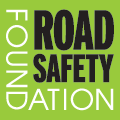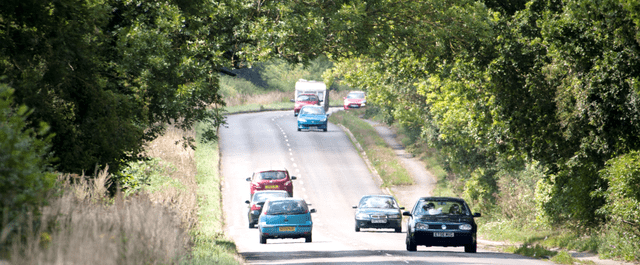HOW MUCH DO ROAD CRASHES COST WHERE YOU LIVE?
Britain loses 2% of GDP in road crashes. Half of all Britain’s road deaths are concentrated on just 10% of roads – the motorways and ‘A’ roads outside urban cores. This annual report maps the risks on the network where so much social and economic loss is concentrated.
For the first time, the Foundation has analysed where the loss of GDP is concentrated in non-metropolitan authorities. In the 3 year period studied, 4 authorities – Kent, Hampshire, Essex and Lancashire – suffered more than £0.5bn of economic loss on their roads from crashes resulting in death and serious injury alone.
Analysis of the 45,000 kms of roads mapped finds Britain’s most improved roads. From consultation with authorities, it shows straightforward attention to detail – such as improved road markings, junction layouts, speed limits, and pedestrian crossings – enabled authorities to reduce road crashes by 80% on the 10 most improved sections.
Britain’s most improved road is the A70 Cumnock – Ayr in Scotland. Britain’s most persistent high risk road is the A18 Laceby – Ludborough between the East Midlands and Yorkshire.
How safe a region is depends on how much travel is on safe and how much is on risky infrastructure.
Britain’s safest region by far is the West Midlands whose single carriageways are the safest. The fastest improving region is Scotland whose single carriageways roads, on which the country is so reliant, now perform above average.
On average, Britain’s single carriageways are now 8 times more risky than a motorway. It is possible that improving vehicle safety is working better on roads with less varied conditions. The largest single cause of death is running off the road: the largest cause of serious injury is at junctions.
Single carriageways in the South East are the worst performing and are nearly twice as risky as those in the West Midlands. Single carriageways in the North West also under perform. Wales and the East Midlands are overall the riskiest places to use the roads.
The establishment of the new government companyHighways Englandpromises scope for major advance. The new company has a clear long term goal to bring the number of people killed or injured on the network to as close to zero as possible by 2040. It recognises that the loss of life on its single carriageways must be tackled. Its short term commitment to deliver 90% of travel on its network at 3-star or better by 2020 puts Britain alongside other leading countries.
For the first time the Foundation maps theHighways Englandnetwork separately providing a baseline for the future: the A21 is its most persistent high risk road and its most improved is a section of M6.
The report shows that leading the way to reduce harm on the roads is not just a moral imperative for the newHighways England, the economic loss on the network for which it has just become responsible, even excluding the cost of traffic delays, exceeds £2bn in the period examined. All authorities now need new focus on raising the safety and reducing the cost of crashes on the busy main roads for which they are responsible.
- Download the full report
- Download the crash costs per non-metropolitan authority
- Download the Risk Rating map for Britain
- Download the Risk Rating map for the English Strategic Road Network
- Download the Risk Rating map for Britain with Parliamentary Constituency boundaries
- Download the Risk Rating map for Scotland
- Download the Risk Rating map for Yorkshire & the Humber
- Download the Risk Rating map for West Midlands
- Download the Risk Rating map for East Midlands
- Download the Risk Rating map for North-West
- Download the Risk Rating map for North-East
- Download the Risk Rating map for East of England
- Download the Risk Rating map for Wales
- Download the Risk Rating map for South-East
- Download the Risk Rating map for South-West
- Download the full press release
- Download the press release for the English Strategic Road Network

